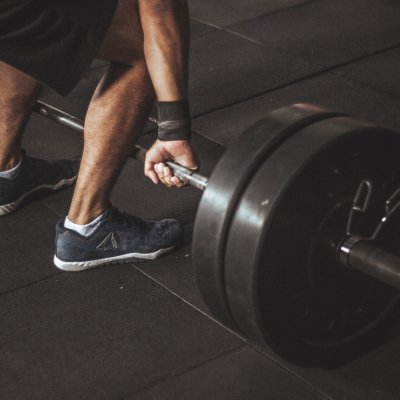Osteoporosis is a global public health concern, particularly affecting older adults and postmenopausal women, resulting in weakened bones and increased fracture risk. However, strength training has emerged as an effective, evidence-based approach for improving bone health and reducing osteoporosis risk. Regular strength training exercises enhance bone mineral density (BMD), increase muscle mass, and improve balance, thereby minimizing the likelihood of falls and fractures.
Recent Evidence Supporting Strength Training
- Bone Mineral Density Improvement
Recent studies continue to reinforce the benefits of mechanical loading through resistance training, especially in improving bone mineral density (BMD) in critical areas such as the lumbar spine and femur, which are most affected by osteoporosis.
A 2015 study highlighted that consistent resistance training over a period of 6 months led to significant improvements in BMD in the lumbar spine, particularly in postmenopausal women. Participants who engaged in moderate to high-load resistance exercises saw an average BMD increase of 1.82%, compared to little to no improvement in a non-active control group.1
Further, a 2023 study explored the effects of low-load, high-repetition resistance exercises and found that they effectively mitigated bone loss, particularly in the lumbar spine and femur, in active postmenopausal women. The study demonstrated that even at lower intensities, weight-bearing activities could improve bone health and prevent the progression of osteoporosis.2 These findings emphasize the importance of weight-bearing exercises, which stimulate osteoblastic activity, enhance bone strength, and are a critical intervention in preventing osteoporosis, particularly for populations at higher risk, such as postmenopausal women.
- Strength Training and Muscle-Bone Interaction
A 2022 study highlighted that muscle strength improvements directly influence bone health. Muscle contractions from resistance exercises apply strain to bones, promoting bone formation and increasing BMD. This demonstrates how strength training strengthens muscles and bones, thus vital to osteoporosis prevention.3
Functional Exercises for Bone Health
- Squats: Strengthen hips, thighs, and lower back, promoting bone growth in these areas.
- Deadlifts: Load the spine and hips, increasing BMD in the lumbar spine and pelvic bones.
- Overhead Press: Enhances bone density in the arms, shoulders, and upper spine.
- Weight-bearing Aerobic Activities
Benefit: Stimulates bone formation by applying impact and stress to the bones, particularly in the legs and spine. Evidence: Studies indicate that high-impact exercises like running, walking, and jumping significantly enhance BMD in the lower body.1,2- Example Exercises:
- Walking or Hiking: Especially uphill or with added weight, stimulates bone growth in the legs and spine.
- Running or Jogging: High-impact forces improve femoral neck and hip BMD.
- Example Exercises:
- Functional Strength Training
Benefit: Improves overall body strength while targeting bones in specific areas through weight-bearing movements. Evidence: Functional exercises such as step-ups and lunges enhance BMD by placing stress on key bones in the lower limbs.1- Example Exercises:
- Step-ups: Targets the femur and lower leg bones, improving BMD.
- Lunges: Strengthens the hips and femur, promoting bone formation.
- Example Exercises:
- Yoga and Pilates
Benefit: Improves balance and flexibility while providing moderate stress to bones. Evidence: While not as impactful as high-load resistance training, yoga poses like "tree pose" or "warrior" improve balance, helping reduce the risk of falls, which is crucial for bone health.
Conclusion
Strength training offers a highly effective method for preventing osteoporosis and maintaining bone health. Functional exercises such as bodyweight squats, step-ups, and wall push-ups are accessible to most people and can easily be integrated into daily routines. These exercises enhance muscle and bone strength, reducing the risk of fractures and improving the overall quality of life for individuals at risk of osteoporosis.
Key Words: strength training, osteoporosis, bone mineral density, functional exercises, fracture prevention, bone health, resistance training
References
- Nicholson VP, McKean MR, Slater GJ, et al. Low-Load Very High-Repetition Resistance Training Attenuates Bone Loss at the Lumbar Spine in Active Post-menopausal Women. Calcif Tissue Int. 2015;96:490–499. doi:10.1007/s00223-015-9976-6
- Holubiac IȘ, Leuciuc FV, Crăciun DM, Dobrescu T. Effect of Strength Training Protocol on Bone Mineral Density for Postmenopausal Women with Osteopenia/Osteoporosis Assessed by Dual-Energy X-ray Absorptiometry (DEXA). Sensors. 2022;22(5):1904. doi:10.3390/s22051904
- Gómez-Cabello A, Ara I, González-Agüero A, et al. Effects of training on bone health in postmenopausal women. J Aging Res. 2022; 2022:1-12. doi:10.1155/2022/9222380
Author declares no competing interests.
Author Bio
Dipti Shah, PT, MsPT, MHA, Cert MDT, Cert CLSSBB, a physical therapist with over a decade of experience, offers insights from her clinical and administrative work. Holding a master’s in healthcare administration from Rutgers University and a Lean Six Sigma Black Belt, she is passionate about improving patient care outcomes and enhancing operational efficiency. Currently working as a Clinical Manager at a large chain PT clinic.

